Gardening enthusiasts, rejoice! There’s something undeniably magical about nurturing a small seed into a thriving plant that ultimately rewards you with delicious, vibrant pumpkins. If you’ve ever wondered, “How many pumpkins per plant?” you’re in the right place. Whether you’re a seasoned gardener or a novice with a green thumb yearning for your very own pumpkin patch, the journey of cultivating these iconic orange orbs is both exciting and fulfilling.
One of the burning questions that often arises in the hearts of pumpkin cultivators is just how many pumpkins they can expect from a single plant. It’s a question that stirs the imagination and fuels the anticipation of that glorious autumn harvest. In this exploration, we will embark on a journey into the world of pumpkin cultivation, revealing the secrets behind estimating the yield from a single plant. So, grab your gardening gloves and let’s uncover the mysteries of pumpkin harvests together!
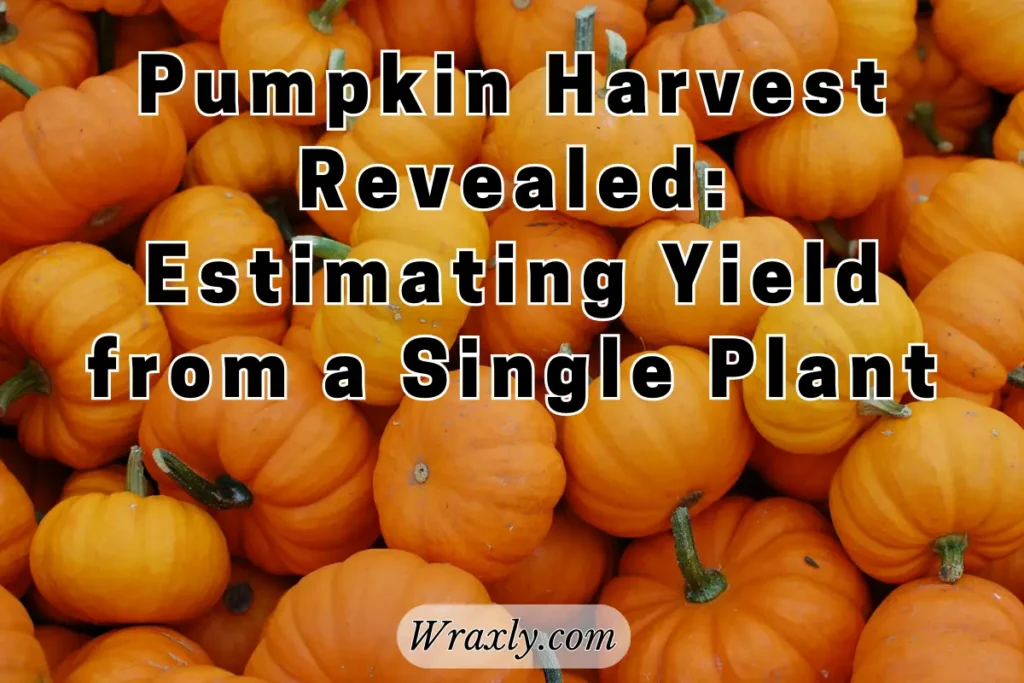
- The Basics of Pumpkin Plants
- Factors Affecting Pumpkin Yield
- Estimating Pumpkin Yield per Plant
- General Guidelines for Estimating Pumpkin Yield
- How Many Pumpkins per Plant?
- Tips for Maximizing Pumpkin Yield
- Harvesting and Enjoying Your Pumpkins
- For Further Reading
- Final Thoughts on How Many Pumpkins Per Plant
The Basics of Pumpkin Plants
Types of Pumpkin Plants
To understand how many pumpkins you can expect from a single plant, it’s crucial to delve into the basics of pumpkin varieties. Pumpkin plants come in two primary types: bush varieties and vine varieties. Each type has its unique characteristics and growth habits, which can significantly influence the eventual yield.
Bush Varieties
These compact pumpkin plants are ideal for smaller garden spaces or containers. They have a more restrained growth habit, with shorter vines that don’t sprawl as extensively as their vine counterparts. Bush varieties tend to produce fewer pumpkins per plant, but the fruits are often larger and more manageable for those with limited space.
Vine Varieties
On the other hand, vine varieties of pumpkins are known for their vigorous growth. They send out long, trailing vines that can cover a considerable area if given room to roam. While vine pumpkins may produce more pumpkins per plant compared to bush varieties, the fruits are usually smaller. Understanding the type of pumpkin plant you’re growing is the first step in estimating your pumpkin yield accurately.
In the next section, we’ll delve deeper into the various growth stages of pumpkin plants, shedding light on how these stages influence the ultimate pumpkin count. So, stay with us as we uncover the fascinating journey of your pumpkin plants from seed to harvest!
Factors Affecting Pumpkin Yield
Now that we’ve laid the groundwork by understanding the types of pumpkin plants, let’s dive deeper into the intricate factors that can significantly impact the number of pumpkins you’ll harvest from each plant. To answer the burning question, “How many pumpkins per plant?” we must consider the following crucial factors:
Sunlight: The Role of Photosynthesis
Sunlight is the lifeblood of plant growth, and pumpkins are no exception. They rely on the energy from the sun to fuel photosynthesis, the process through which they convert sunlight into sugars and ultimately into pumpkin growth. Adequate sunlight is essential for healthy plants and, consequently, a robust pumpkin yield.
Water and Soil: The Foundation of Growth
The quality of the soil and the availability of water play pivotal roles in determining how many pumpkins a single plant can produce. Pumpkin plants thrive in well-draining soil with a slightly acidic to neutral pH level. Ensuring that your pumpkin plants receive consistent and adequate watering is vital for healthy growth. We’ll explore soil and watering techniques in more detail later in this article.
Recommended Soil Test Kits
| Image | Title | Prime | Buy |
|---|---|---|---|
 | MySoil - Soil Test Kit | Grow The Best Lawn & Garden | Complete & Accurate Nutrient and pH Analysis with Recommendations Tailored to Your Soil and Plant Needs | PrimeEligible | Check My Price on Amazon |
Top | Luster Leaf 1601 Rapitest Test Kit for Soil pH, Nitrogen, Phosphorous and Potash, 1 Pack | Prime | Check My Price on Amazon |
 | Soil Test Kit -140 Test- Testing PH Ammonia Nitrogen Phosphorus and Potassium - Tester for Your Vegetable Garden Lawn and Soil | PrimeEligible | Check My Price on Amazon |
 | Whitetail Institute Laboratory Soil Test Kit, Ensures The Most Successful Deer Food Plot Possible, Professional Consultation Included, Receive Results Within One Week | PrimeEligible | Check My Price on Amazon |
 | Lamotte Model El - Turf and Garden Soil Test Kit - 5679-01 | PrimeEligible | Check My Price on Amazon |
 | Garden Tutor Soil pH Test Kit (3.5-9 Range) | 100 Soil pH Test Strips | PrimeEligible | Check My Price on Amazon |
 | Soil pH Paper Test Kit – 100 Tester Strips (3.5-9 Range) – Use for Testing Garden Home Lawn Grass Vegetable Gardening Dirt Yard Compost Outdoor and Indoor Plants | PrimeEligible | Check My Price on Amazon |
Pollination: The Significance of Pollinators
Pumpkin plants rely on pollinators, primarily bees, to transfer pollen from male to female flowers. Without successful pollination, the chances of fruit development decrease significantly. Ensuring a healthy population of pollinators in your garden can directly impact the number of pumpkins each plant produces.
Pest and Disease Management: Protecting Your Pumpkin Investment
Pumpkin plants are susceptible to pests and diseases that can hinder growth and reduce yield. Understanding how to identify and manage these issues is essential to ensure your plants remain healthy and productive.
Fertilization: Providing Proper Nutrients
Proper fertilization is key to supporting pumpkin growth. Pumpkin plants require essential nutrients, including nitrogen, phosphorus, and potassium, as well as micronutrients. Balancing these nutrients through fertilization can help optimize pumpkin yield.
As we continue our journey into estimating pumpkin yield per plant, keep these factors in mind, as they will all contribute to the final pumpkin count. In the following sections, we’ll explore each factor in more detail and provide tips on how to maximize your pumpkin harvest. So, let’s keep growing together and uncover the secrets of successful pumpkin cultivation!
Estimating Pumpkin Yield per Plant
Understanding the factors affecting pumpkin yield is crucial, but now let’s focus on the heart of the matter: estimating just how many pumpkins you can expect from a single plant. It’s an exciting and, at times, elusive endeavor, as the actual number can vary due to several variables.
Variability in Pumpkin Yield
One of the fascinating aspects of gardening is that no two pumpkin plants are exactly alike. Even when grown under seemingly identical conditions, variations can occur in terms of how many pumpkins each plant produces. This variability can be attributed to two main factors:
Plant Health and Care: A well-cared-for pumpkin plant, with optimal sunlight, water, and nutrition, is more likely to yield a higher number of pumpkins. Conversely, neglecting your plants or exposing them to stressors can reduce their productivity.
Environmental Conditions: Your local climate and weather conditions can have a significant impact on pumpkin yield. Factors such as temperature, humidity, and unexpected weather events can all influence the number of pumpkins your plant produces.
Factors to Consider
To estimate how many pumpkins you can expect from a single plant, consider the following factors:
Plant Spacing: Proper spacing between pumpkin plants is crucial. Crowded plants may compete for resources and produce fewer pumpkins. Follow recommended spacing guidelines for your specific pumpkin variety.
Pumpkin Size and Type: The size and type of pumpkins you’re growing also matter. Some varieties are known for producing smaller pumpkins, while others yield larger ones. Additionally, miniature pumpkins may grow in clusters, affecting your overall count.
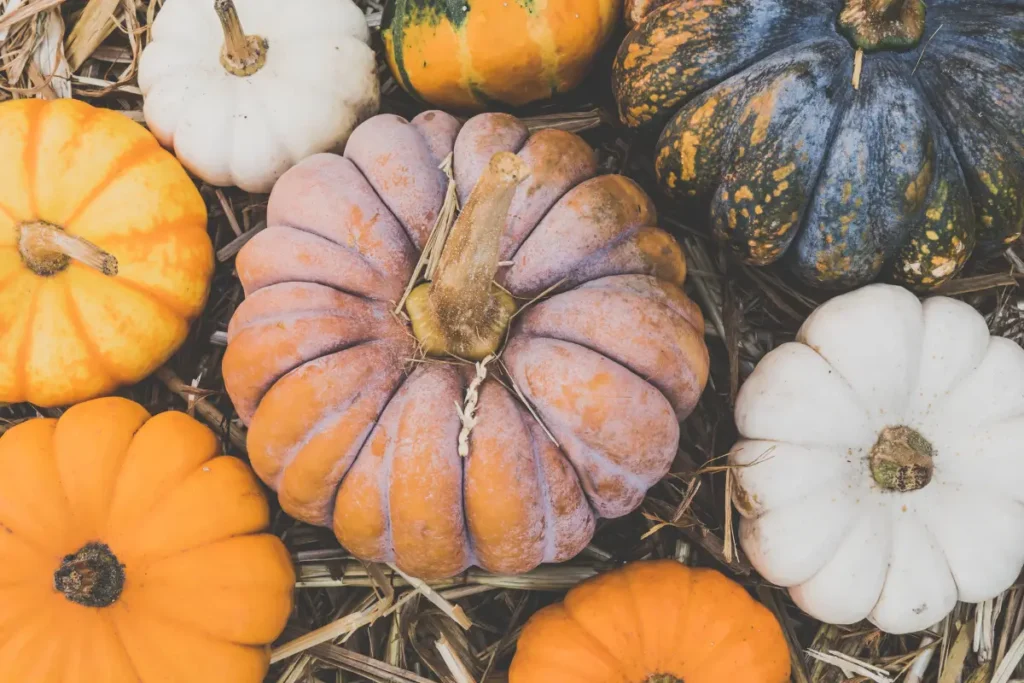
Genetic Variability: Each pumpkin seed has its unique genetic makeup. Some seeds may result in more prolific plants, while others may be less productive. It’s a natural variation that adds a bit of unpredictability to your harvest.
General Guidelines for Estimating Pumpkin Yield
While pinpointing an exact number of pumpkins per plant can be challenging, here are some general guidelines based on pumpkin type:
For Bush Varieties: You can typically expect 1 to 3 pumpkins per plant for bush varieties. These pumpkins are often larger and more uniform in size.
For Vine Varieties: Vine varieties can produce a wider range, with some plants yielding 2 to 5 or more pumpkins. However, these pumpkins are usually smaller in size.
In the upcoming section, we’ll delve into the specifics of how different pumpkin types influence your overall yield, providing a clearer picture of what to anticipate based on your choice of pumpkin variety. So, as you tend to your garden, remember that patience and a little unpredictability are all part of the joy of growing pumpkins!
How Many Pumpkins per Plant?
Now that we’ve explored the factors that affect pumpkin yield and considered the general guidelines for estimating the number of pumpkins you can expect from a single plant, let’s delve deeper into the specifics. The actual count of pumpkins you’ll harvest from each plant can vary based on various factors, and this section will shed light on those variations.
Bush Varieties vs. Vine Varieties
The type of pumpkin plant you choose to cultivate plays a pivotal role in determining how many pumpkins you’ll ultimately harvest. Let’s break down the differences between bush varieties and vine varieties:
Bush Varieties: These compact plants typically produce 1 to 3 pumpkins per plant. While the pumpkin count might seem lower than vine varieties, the fruits from bush plants are often larger and more uniform in size. This makes them an excellent choice for gardeners with limited space or those looking to grow pumpkins for carving and decorating.
Vine Varieties: Vine varieties can be more prolific, with some plants yielding 2 to 5 or even more pumpkins. However, these pumpkins are usually smaller in size compared to those from bush plants. The sprawling nature of vine varieties requires more garden space and may be better suited for those looking to grow smaller pumpkins for cooking or crafting.
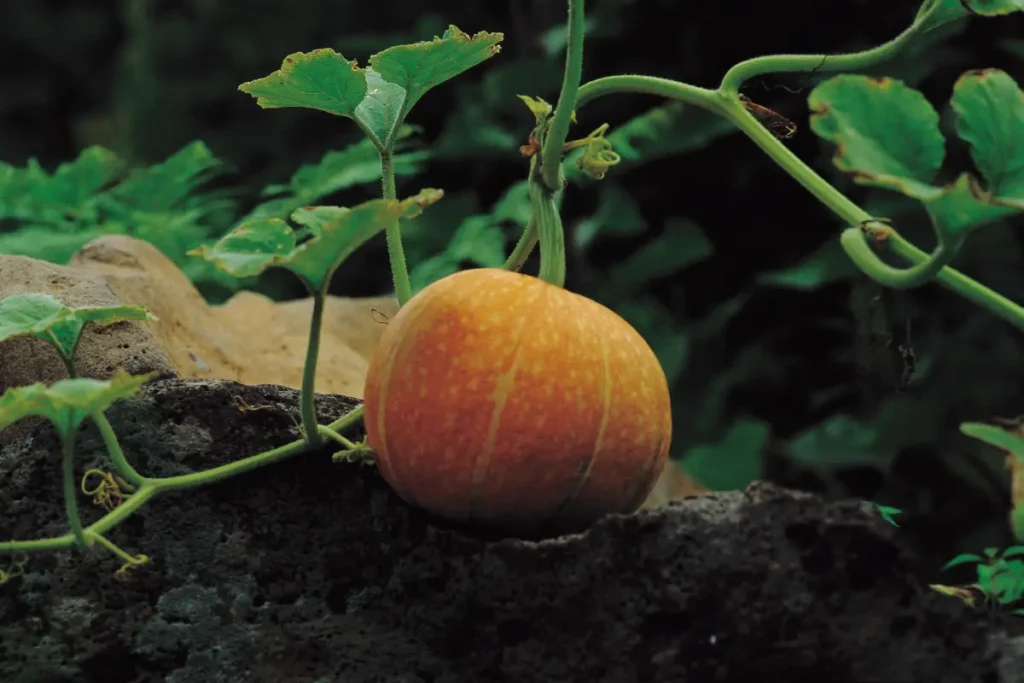
Average Pumpkin Yield per Plant
While it’s challenging to provide an exact number, especially considering the variability discussed earlier, here’s a rough estimate of average pumpkin yields based on pumpkin type:
- Bush Varieties: 1 to 3 pumpkins per plant.
- Vine Varieties: 2 to 5 or more pumpkins per plant.
Remember, these are just general guidelines, and your actual harvest may vary. Factors like environmental conditions, care, and the specific pumpkin variety you choose can all influence the final count. To get a more accurate estimate, it’s advisable to observe your plants as they grow and monitor their progress throughout the season.
In the next section, we’ll share tips and techniques for maximizing your pumpkin yield, helping you get the most out of your pumpkin plants and your gardening experience. So, stay tuned as we continue our journey into the world of pumpkin cultivation!
Tips for Maximizing Pumpkin Yield
Now that we’ve explored the factors influencing pumpkin yield and discussed the potential number of pumpkins per plant, it’s time to equip you with valuable tips and techniques to ensure your pumpkin harvest is as bountiful as possible. Whether you’re growing bush or vine varieties, these strategies will help you make the most of your pumpkin plants:
Proper Care and Maintenance
- Consistent Watering: Maintain consistent soil moisture by watering your pumpkin plants regularly, especially during dry spells. Ensure the soil stays consistently moist, but avoid waterlogged conditions.
- Mulching: Apply mulch around the base of your plants to help retain soil moisture, suppress weeds, and regulate soil temperature.
- Regular Feeding: Provide your pumpkin plants with the nutrients they need by fertilizing according to recommended guidelines. Balanced nutrition supports healthy growth and fruit development.
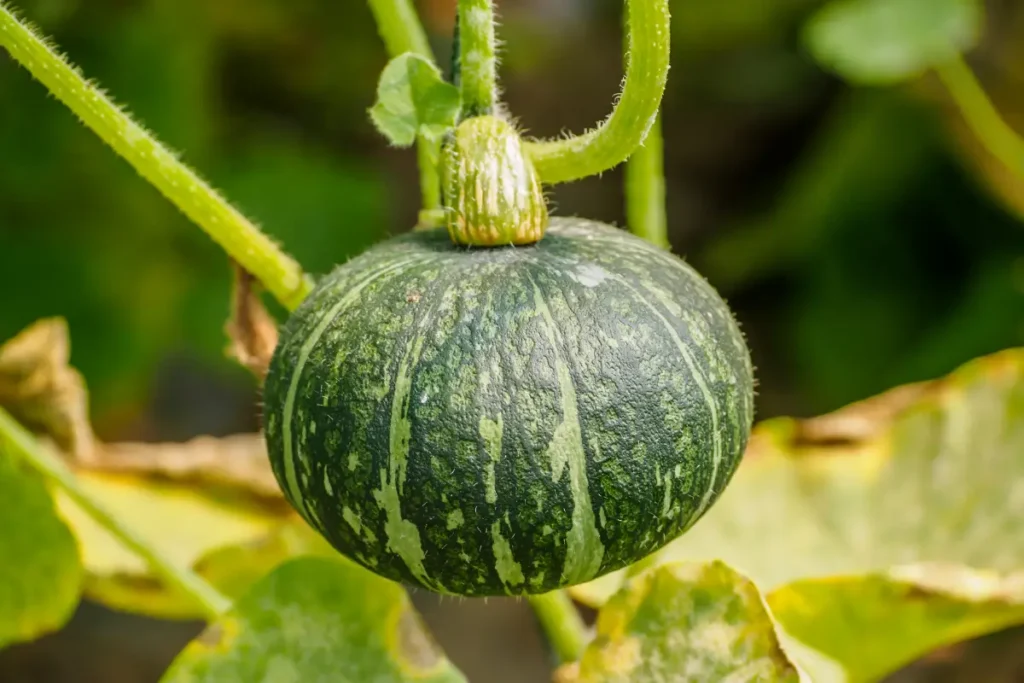
Pruning and Training
- Pruning: For vine varieties, consider pruning excess vines and leaves. This focuses the plant’s energy on fruit production and helps prevent overcrowding.
- Training: Train the vines to grow in a controlled manner, guiding them away from paths and other plants. This prevents damage and helps maximize space.
Managing Pests and Diseases
- Monitor Closely: Regularly inspect your plants for signs of pests or disease. Early detection allows for prompt intervention and reduces the impact on yield.
- Natural Remedies: Explore organic pest control methods like neem oil, companion planting, or introducing beneficial insects to your garden.
Timing and Pollination Techniques
- Hand Pollination: In cases of poor pollination, consider hand-pollinating your pumpkin flowers. Gently transfer pollen from male to female flowers using a small brush or cotton swab.
- Timing Planting: Plant your pumpkin seeds at the right time for your region, ensuring they have ample time to grow and produce fruit before the end of the growing season.
By following these tips and techniques, you can create optimal conditions for your pumpkin plants to thrive. Whether you aim for a few large pumpkins or a multitude of smaller ones, these practices will help you achieve a satisfying and abundant harvest.
In the next section, we’ll explore the exciting world of harvesting and enjoying your pumpkins. We’ll discuss the signs of ripeness, harvesting techniques, and share delightful pumpkin recipes and creative ideas. So, stay tuned for more pumpkin-inspired goodness!
Harvesting and Enjoying Your Pumpkins
As your pumpkin plants grow and thrive, the anticipation of the impending harvest builds. This section will guide you through the exciting process of harvesting your pumpkins and offer delightful ways to savor the fruits of your labor.
Signs of Ripeness
Knowing when to harvest your pumpkins is crucial for ensuring they reach their peak flavor and quality. Look for these signs to determine if your pumpkins are ripe and ready for picking:
- Color: Mature pumpkins typically display a vibrant, uniform color. Depending on the variety, this may be a deep orange, green, or even white.
- Hardness: Gently press your fingernail against the pumpkin’s skin. If it’s hard and resists puncture, it’s likely ripe. Avoid pumpkins with soft spots.
- Sound: Give your pumpkin a tap. A ripe pumpkin will produce a hollow, slightly echoing sound.
- Stem Drying: The stem connecting the pumpkin to the vine should be dry and corky. If it’s green and pliable, the pumpkin may not be fully mature.
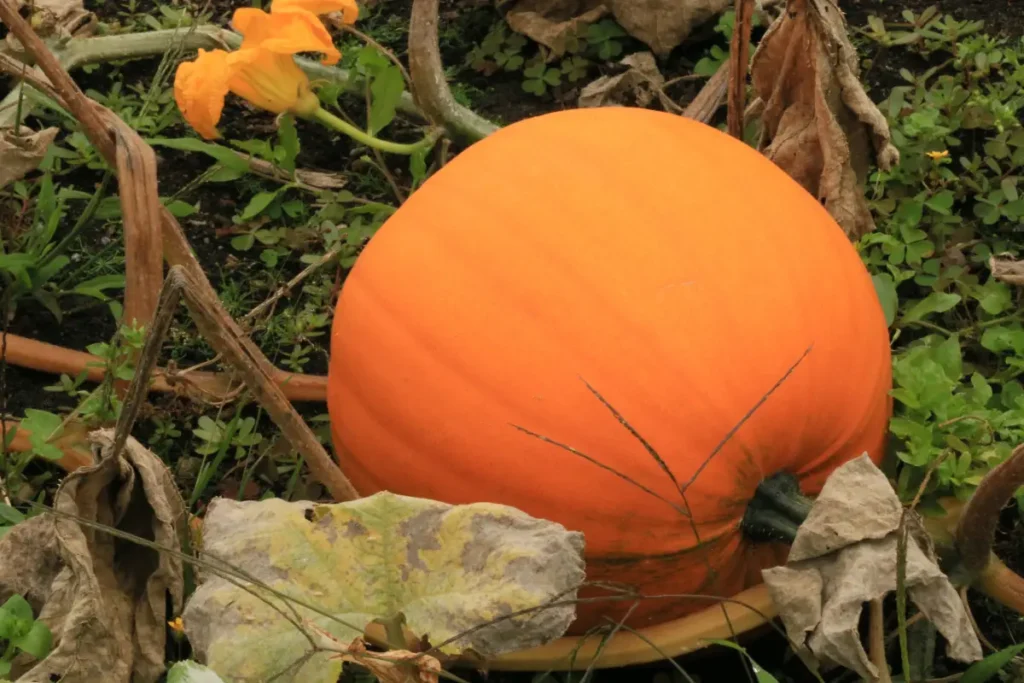
Harvesting Techniques
When you’ve determined that your pumpkins are ready for harvest, follow these steps to ensure a safe and successful harvest:
- Use Pruning Shears: Instead of yanking or twisting the pumpkin from the vine, use clean pruning shears to cut it carefully. Leave a few inches of stem attached to the pumpkin.
- Handle with Care: Handle your pumpkins gently to prevent bruising or damage to the skin.
- Avoid Carrying by the Stem: Never carry a pumpkin by its stem, as this can cause it to break away from the fruit.
Pumpkin Recipes and Creative Ideas
The joy of growing pumpkins extends beyond the garden into your kitchen and home. Here are some creative ideas for enjoying your pumpkin harvest:
- Pumpkin Pie: A classic favorite, pumpkin pie is a delicious way to savor the flavor of your freshly harvested pumpkins.
- Roasted Pumpkin Seeds: Don’t discard those pumpkin seeds! Roast them with your favorite seasonings for a crunchy, nutritious snack.
- Pumpkin Soup: Warm up with a hearty bowl of pumpkin soup, perfect for chilly autumn evenings.
- Decorative Displays: Use smaller pumpkins to create decorative displays for your home or front porch. Carve them, paint them, or arrange them in creative ways to celebrate the season.
- Pumpkin Crafts: Get crafty with your pumpkins by turning them into festive decorations, like candle holders or floral arrangements.
Your journey from planting to harvesting pumpkins is filled with excitement and rewards. By understanding the signs of ripeness and employing proper harvesting techniques, you can enjoy the fruits of your labor to the fullest. Whether you’re savoring pumpkin dishes or getting creative with pumpkin-themed decor, the possibilities are as endless as your gardening passion.
In our final section, we’ll wrap up our exploration of estimating pumpkin yield per plant and offer some encouraging words to inspire your continued gardening adventures. So, stay tuned for the conclusion of our pumpkin harvest journey!
For Further Reading
- When to Enjoy Fresh Rhubarb: A Guide to Rhubarb Season
- From Plant to Plate: How Many Strawberries Can You Expect?
- Do Watermelons Grow on Trees?
Final Thoughts on How Many Pumpkins Per Plant
In the enchanting world of gardening, the quest to estimate how many pumpkins one can harvest from a single plant is a journey marked by patience, passion, and wonder. As we conclude this exploration, we are reminded that the answer to this question is not merely a number, but a testament to the beauty of nature’s mysteries. It is a reminder that in the garden, there are no absolutes, only the ever-unfolding story of growth and abundance.
Each pumpkin we cultivate is a testament to our dedication as gardeners, a canvas upon which nature paints its vibrant hues. Whether you aspire to carve the perfect Jack-o’-lantern, savor the flavors of autumn in a homemade pie, or simply revel in the joy of nurturing life, your pumpkin patch is a sanctuary of memories waiting to be created. As you continue your gardening adventures, may your harvests be bountiful, your gardening spirit resilient, and your love for growing pumpkins evergreen. Thank you for joining us on this journey, and may your future harvests be as abundant as the beauty of nature itself. Happy gardening!

Darrell has a passion for gardening that he inherited from his father. Go here to read more about the influence his father played in his love for gardening. If you want to send Darrell a quick message, then visit his contact page here.


![How to Water Indoor Plants [Plant Care 101]](https://wraxly.com/wp-content/uploads/2021/03/How-to-Water-Indoor-Plants-Plant-Care-101-1200-1024x576.webp)

![Growing Plants from Cuttings [A Simple Guide]](https://wraxly.com/wp-content/uploads/2021/03/Growing-Plants-from-Cuttings-A-Simple-Guide-1200-1024x576.webp)